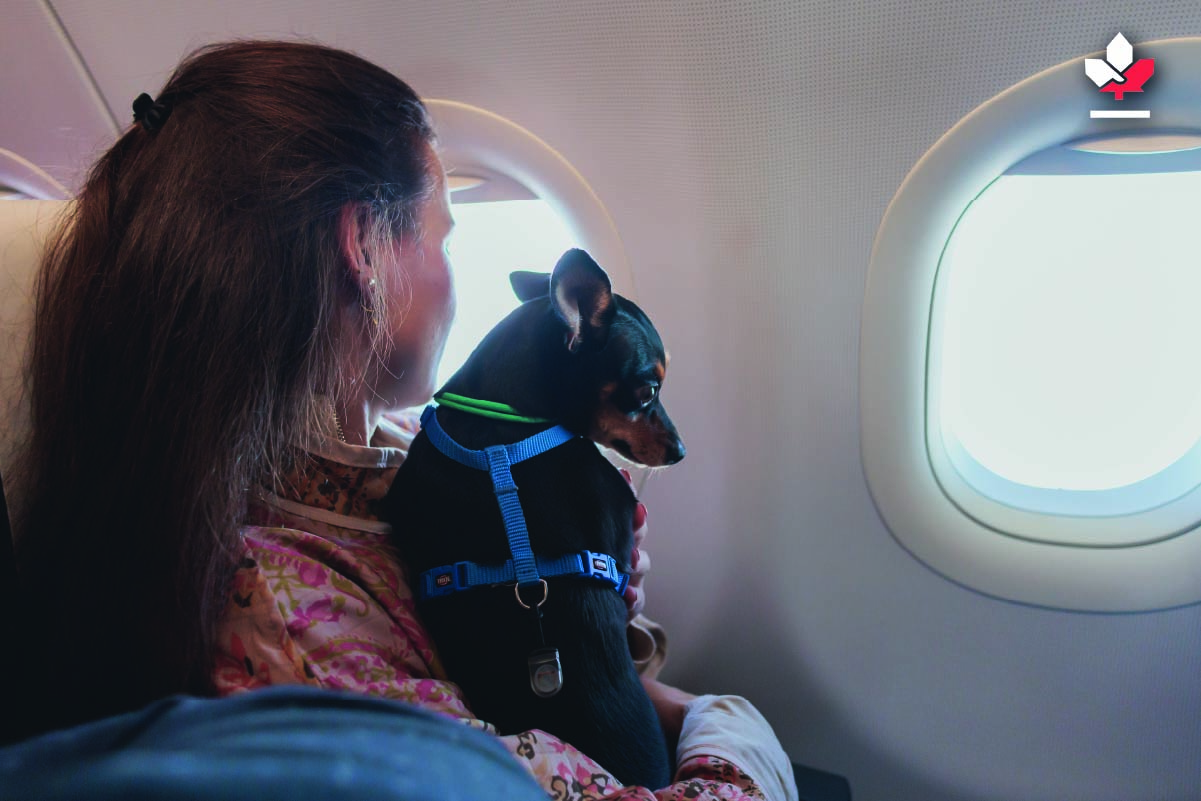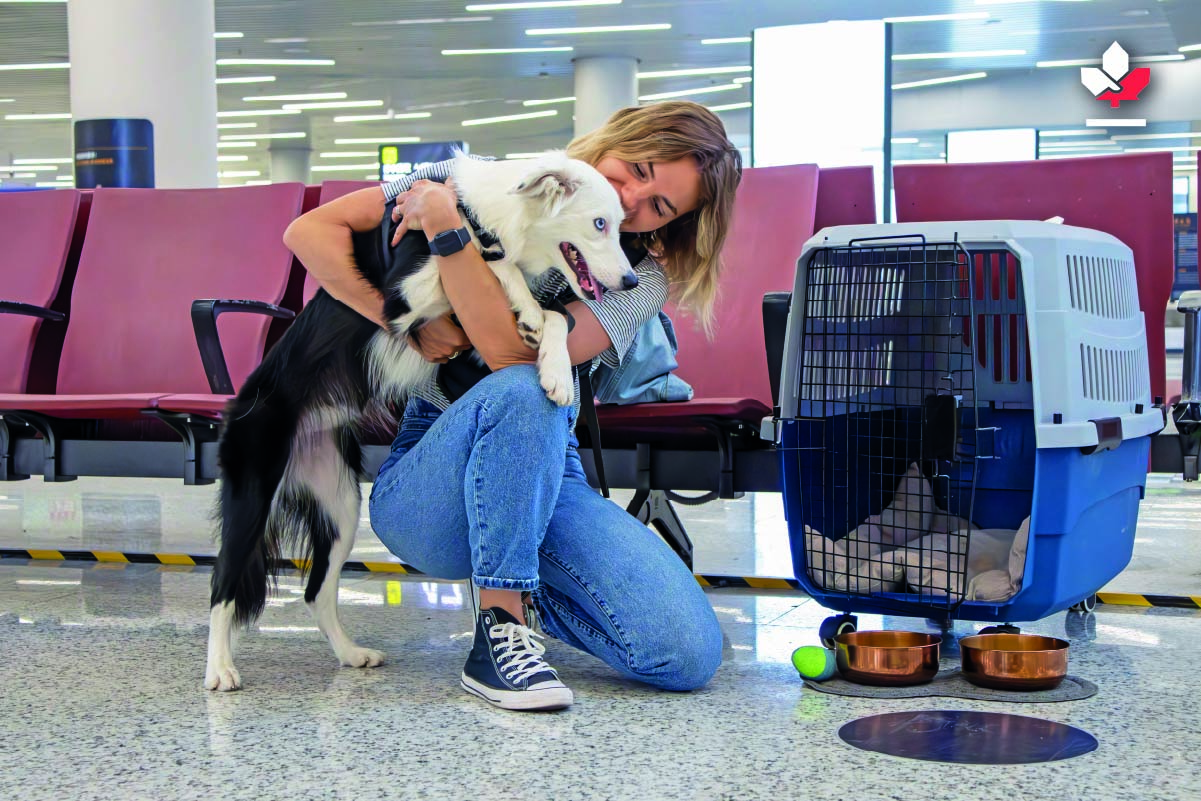Your Guide to Moving Your Pets to Canada
November 7, 2024
|
Moving to Canada with pets requires careful planning and adherence to specific regulations. Each year, thousands of newcomers bring their beloved pets to Canada, making pet immigration an essential aspect of the relocation process. Understanding the requirements for bringing your pet to Canada helps ensure a smooth transition for both you and your animal companion.
The Canadian Border Services Agency (CBSA) maintains strict guidelines for pet immigration to protect both animals and citizens. This comprehensive guide covers all crucial aspects of moving your pets to Canada, including vaccination requirements, documentation procedures, transportation guidelines, and breed restrictions. We will walk you through each step of the process, helping you navigate the requirements efficiently and prepare for your move to Canada with confidence.
Understanding Canadian Pet Import Regulations

The Canadian Food Inspection Agency (CFIA) establishes strict regulations for bringing pets into Canada, ensuring both animal and public health safety. These guidelines determine which animals can enter the country and under what conditions.
Eligible Pets for immigration to Canada
When you plan to bring your pet to Canada, it is important to note that only cats and dogs are eligible for standard personal pet immigration. Other animals like birds, reptiles, or exotic pets require special import permits and fall under commercial category regulations. The CFIA maintains these restrictions to prevent the spread of diseases and protect Canadian wildlife.
Age Requirements for Dogs and Cats
The age of your pet plays a crucial role in the immigration process. Dogs must be at least eight months old to enter Canada as personal pets, while cats must be at least three months of age. These age requirements align with vaccination schedules and help ensure that incoming pets have developed sufficient immunity against common diseases.
For pets younger than the required age, special considerations apply. You will need to provide official documentation proving your pet's age, and additional restrictions may be imposed. Young animals may require quarantine or additional health screenings upon arrival.
Restricted Dog Breeds in Canada
Canada maintains specific restrictions on certain dog breeds for public safety reasons. The following breeds are not permitted to enter the country:
- American Staffordshire Terrier
- American Pit Bull Terrier
- Pit Bull Terrier
- Staffordshire Bull Terrier
These breed restrictions are strictly enforced by the CBSA at all points of entry. It's essential to verify your dog's breed documentation before planning your move to Canada, as misidentification or unclear breeding records could result in entry denial.
For commercial imports or special cases, the CFIA may require additional documentation or permits. This includes situations where pets are being brought in for breeding purposes, shows, or adoption. The requirements become more stringent for commercial imports, including mandatory microchipping for dogs under eight months old.
When bringing your pet to Canada, understanding these regulations is crucial for a successful immigration process. The CBSA officers at ports of entry are authorized to verify compliance with these requirements and may deny entry to pets that don't meet the specified criteria.
Essential Documentation for Pet Immigration
Proper documentation is the cornerstone of successfully bringing your pet to Canada. The CBSA requires specific paperwork to ensure your pet's smooth entry into the country. We go through the essential documents you need to prepare.
Rabies Vaccination Certificate Requirements
A valid rabies vaccination certificate is mandatory for all cats and dogs entering Canada. The certificate must meet specific criteria to be accepted:
- Written in English or French
- Signed by a licensed veterinarian
- Include pet identification details (breed, color, weight)
- Specify vaccination date and duration of immunity
- Contain the vaccine's trade name and serial number
- Display the veterinarian's name and signature
- The vaccination must be current at the time of entry. If the certificate does not specify immunity duration, authorities will consider it valid for one year from the vaccination date.
Microchipping Guidelines
While microchipping is not mandatory for all pets entering Canada, it is highly recommended for identification purposes. The microchip serves as a permanent form of identification, containing a unique number linked to your contact information in various databases.
There are important exceptions to note regarding microchipping requirements:
- Service Dogs: These animals are exempt from microchipping requirements when accompanied by the person they assist. However, proper service animal documentation must be presented.
- Commercial Imports: Dogs under eight months old entering under commercial categories must have microchips, including those destined for adoption.
Proof of Age for Young Pets
Age verification documentation becomes crucial when bringing young pets to Canada. For puppies and kittens below the standard vaccination age, you must provide official proof of age from a licensed veterinarian.
If your pet arrives without proper documentation, you'll have two weeks to obtain the necessary vaccinations and return the paperwork to the CFIA. This grace period comes with higher inspection fees.
The CBSA officers at ports of entry are authorized to conduct thorough document checks and may request additional inspections if they notice any health concerns. These supplementary inspections by CFIA officials will incur extra charges, making it crucial to ensure all documentation is complete and accurate before travel.
Remember that all documents must be original or certified copies. Digital versions or photocopies may not be accepted, so keep your original documentation readily accessible during travel.
Associated Fees and Costs
The cost structure for bringing your pet to Canada varies depending on compliance status and the number of pets. Here's a comprehensive breakdown of the fees.
| Entry Type | First Pet | Additional Pets |
|---|---|---|
| Standard Entry | 30 CAD + tax | 5 CAD + tax |
| Non-compliant Entry | 55 CAD+ tax | 30 CAD+ tax |
| U.S. Origin Pets | No fee | No fee |
Additional costs may apply in specific situations:
- Secondary CFIA inspections if health concerns arise
- Veterinary services if required during entry
- Storage fees if temporary holding is necessary
Preparing Your Pet for the Move

Successful pet relocation to Canada begins with thorough preparation weeks before your departure date. The right planning ensures your pet's comfort and safety throughout the journey while meeting all Canadian immigration requirements.
Choosing the Right Pet Carrier
Selecting an appropriate carrier is crucial for your pet's safety during travel. The carrier must comply with both airline regulations and CBSA requirements. Essential carrier specifications include:
- Sturdy construction with secure fasteners
- Adequate ventilation on at least three sides
- Waterproof bottom with absorbent material
- Large enough for your pet to stand, turn, and lie down
- Proper labeling with "Live Animal" and directional arrows
- Secure door that fastens well but is easily accessible
Your carrier should include both food and water containers that are accessible without opening the door. For air travel, ensure the carrier meets the International Air Transport Association (IATA) standards, as these are recognized by Canadian authorities.
Tips for a Stress-free journey For Your Pet
Preparing your pet for the journey to Canada requires careful attention to their physical and emotional well-being. Start preparation at least one month before travel:
- Visit your veterinarian for a pre-travel health check
- Maintain regular routines in the weeks before departure
- Familiarize your pet with their travel carrier
- Pack comfort items like favorite toys or blankets
- Plan travel times to avoid extreme temperatures
For air travel, book direct flights when possible to minimize stress. If you're moving to Canada during peak seasons, make reservations well in advance as airlines often limit the number of pets per flight.
Inspection Procedures at the Port of Entry
When you arrive at the port of entry, CBSA officers conduct a thorough inspection process that includes:
- Verification of rabies vaccination certificates and their validity
- Matching pet descriptions with documentation
- Visual health assessment of your pet
- Checking for signs of illness or distress
- Verification of age documentation for young pets
Note that if your pet shows any signs of illness during the inspection, a CBSA officer may request an additional evaluation by a CFIA official. This supplementary inspection helps ensure that no communicable diseases enter the country.
Handling Pets Without Proper Documentation

When moving to Canada with pets that lack proper documentation, the CBSA has established procedures to handle these situations. You will receive a two-week grace period to:
- Obtain necessary vaccinations from a Canadian veterinarian
- Submit updated documentation to the CFIA
- Pay higher inspection fees as per non-compliant entry rates
- Complete any additional requirements specified by border officials
It is important to note that while this grace period exists, it comes with increased costs and potential complications. The CBSA maintains this policy to ensure public safety while providing pet owners a reasonable opportunity to comply with Canadian regulations.
FAQs
What Should I do During the Grace Period for Meeting CFIA Requirements?
During the grace period, it’s important to maintain regular communication with the CFIA and provide updates on your progress toward fulfilling the necessary requirements. If you do not complete these steps within the allocated time frame, you could face additional penalties or, in extreme cases, need to make alternative arrangements for your pet.
What is Involved in the Inspection Process for Pets Arriving by Air?
For pets arriving by air, the inspection process includes additional steps to verify that the airline's specific transportation requirements were followed during the flight. This ensures compliance with both Canadian immigration and animal welfare standards for your pet.
